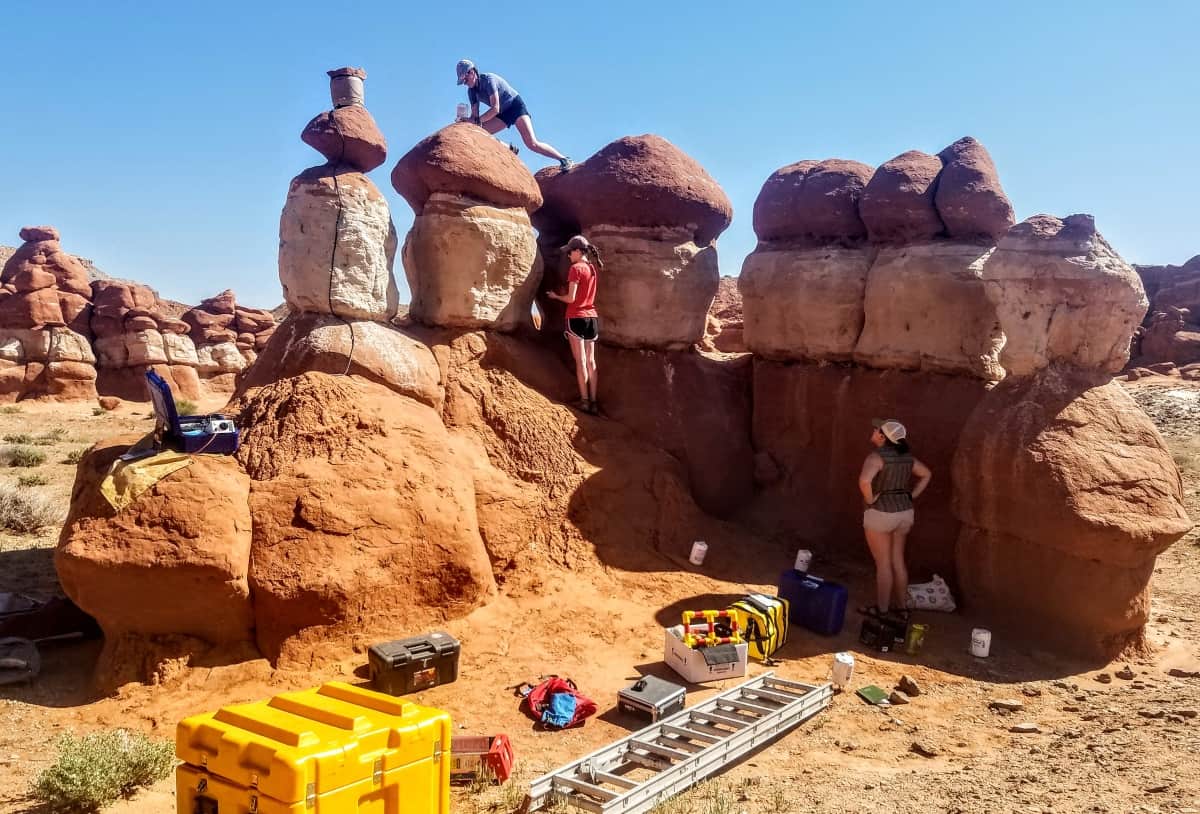
Rainbow Bridge, the largest known rock arch in the world, spans a tributary of Lake Powell in the western US state of Utah. As the main access is via a three-hour boat trip followed by a 1.5 km hike, some visitors opt for a quick helicopter tour to view the spectacular formation. Around 1500 such flights were recorded in 2018.
As early as 2015, a consortium of Native American tribes – Navajo, Hopi, Zuni and others – expressed concern that vibrations from rotor blades might be harmful to the bridge, which is sacred to all of them. Jeffrey Moore of the University of Utah conducted a study, which revealed that Rainbow Bridge has a natural resonating frequency of just 1 Hz and is therefore unlikely to be affected by helicopter flights, at least over human time scales.
But, what about other formations? Southern Utah is home to some 6000 rock arches of varying sizes, as well as towers, known locally as hoodoos, and many other formations that draw visitors from all over the world. How vulnerable are they to vibrations from the thousands of helicopter flights that approach them each year?
At the annual meeting of the American Geophysical Union (AGU), held in San Francisco, California, in December, University of Utah graduate student Riley Finnegan described a project she led to answer those questions. Under Moore’s supervision, she studied 11 sites on public lands, mostly in remote areas, but also in heavily visited Bryce Canyon National Park.

Finnegan and colleagues fitted rock formations with geophones and other instruments and then analysed the impact of helicopters, both regular tourist trips and specially chartered flights. She told reporters at AGU that twin rotor helicopters produce infrasound at 13 Hz, well below the threshold of human hearing, but at up to 100 dB, a deafening level if it were audible. Those powerful vibrations can cause some towers and arches to shake up to 100 times more strongly than they normally do, she found.
“You can consider any kind of arch like a guitar string. If you pluck the guitar strings, it will vibrate at certain frequencies,” Finnegan explained. “The Earth is constantly plucking the arch, so it is constantly vibrating.”
Relevant factors include distance, speed, number of blades and angle of the helicopter, as well as the size, shape and stiffness of the rock formation. One arch Finnegan described vibrates at 6 Hz, 16 Hz, 26 Hz and 36 Hz. “Twenty-six hertz happens to coincide with a sound frequency emitted by a helicopter,” she noted, which amplifies the arch’s natural vibration. She likened it to timing the pushes on a child’s swing to make it go higher and higher.
At another arch, visited by as many as 1000 helicopters per year, although no closer to it than 600 m, vibrations during flights increased by 100 times. However, “the vibrations don’t reach a level that we would consider instantaneously damaging,” Finnegan said.
Moore notes that the National Park Service (NPS) does not control the air space over its parks. At some facilities, like Rainbow Arch, voluntary agreements have been negotiated between NPS and tour operators to control the number, timing and location of flights. Still to be determined, he says, is the long-term influence of thousands of helicopter tours on rock formations that evolved for thousands of years in isolation from human energy sources.


